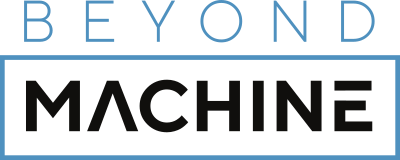By Yasmin Chamchoun
Best languages for machine learning and data analytics
Machine Learning Language can be defined as an application of machine learning for developing predictive models and algorithms that automate reasoning tasks with language data. Machine learning languages are difficult to learn and at times, frustrating. But they are revolutionizing the way we create applications and algorithms by using advanced techniques like deep learning.
Programming languages such as Python, R, and JavaScript are often used in ML language and they provide many libraries, tools and frameworks for implementing machine-learning methods in text analytics.
Python
Python is a popular programming language for beginners. This is because it’s easy to learn and has an intuitive syntax that makes it easy to read. It’s also one of the most-used languages in Data Science, Machine Learning, and Artificial Intelligence. It can be used to automate repetitive tasks, like scraping web pages or reformatting data.
Python has many features that make it an attractive programming language, but here are five reasons why it’s so popular:
- · Python comes with a comprehensive standard library
- · There are many tools to help you debug, test your code and generate reports
- · Python has powerful data structures
- · It’s compatible with just about everything
- · It’s very readable
The top 5 Machine Learning libraries in python that are widely used by ML experts are: Numpy, Pandas, Matplotlib, SciKit-Learn and NLTK.
R
R is a another popular programming language and software environment for statistical computing, data mining, data analysis, graphics representation, and so on. The R language is an open source project with an active community of contributors from around the world.
The development of the R language was started by Ross Ihaka and Robert Gentleman at the University of Auckland in 1995.
Julia
Julia is a relatively new programming language created in 2008 by MIT professor Dr. Alan Edelman.
It is considered is a dynamic and interactive programming language that offers programmers the performance of compiled languages with the ease-of-use of a scripting language. Its LLVM-based runtime makes it unique in this respect. Julia combines the power and versatility of programming languages like Python, R, Matlab, or Ruby with the speed and efficiency of a natively compiled language such as C or C++.
In this way, Julia is able to provide the benefits of both worlds: speed without giving up convenience. It also provides first-class integration with other languages such as C/C++ via its foreign function interface, meaning that users can call routines written in other languages without knowing any details about those other languages.
Java
Java is a programming language mainly used for enterprise software that was developed at Sun Microsystems in the early 1990s. It was originally designed for interactive television, but it has since become used in many other applications. It’s considered one of the simplest languages to learn, even if you have no prior coding experience. It follows the objected-oriented programming paradigm.
Java is used sometimes for machine learning deployment, but these days it is rarely the first language of choice. It’s great for enterprise software, but languages like Python or Scala are usually preferred for data science and machine learning projects.
Scala
Scala is a strong statically typed general-purpose programming language which supports both object-oriented programming and functional programming on the Java Virtual Machine. Scala combines object-oriented and functional programming. Scala is designed to interoperate smoothly with Java code, and fully supports running on the JVM.
It can be used as a scripting language for applications that need a program which executes faster than Java but does not require compilation.
Scala has been successfully applied in domains as diverse as video games, mathematical modelling, machine learning, concurrency testing, image processing, business intelligence systems and web applications. It is used for machine learning deployments, some times, but it is not nearly as popular as Python.
JavaScript
JavaScript is also one of the most popular programming languages for starting out and is mostly used in frontend. It has become more prevalent than ever with the emergence of new technologies like Node.js. It was developed by Netscape in 1995 to facilitate web development. JavaScript can be applied to both client-side and server-side scripting where it can be used to create interactive websites, web applications, and also mobile apps.
The popularity of JavaScript is because it’s easy to learn and it’s compatible with many different programming languages which makes it easy for developers to use when they are working on different projects. It is possible to do machine learning on javascript using libraries like Tensorflow.js.
So, which of these languages has the brightest outlook?
A recent Linkedin poll by expert data scientist Dr. Stylianos Kampakis revealed some interesting results. Nearly 80% of voters believed Python was the way forward. Those who voted ‘Other’ mentioned programming languages such as ‘Julia’ and ‘Rust’ as the ones with the brighter future. You can see the poll results below as well as check them out here.

Do you want to become data scientist?

Do you want to become a data scientist and pursue a lucrative career with a high salary, working from anywhere in the world? I have developed a unique course based on my 10+ years of teaching experience in this area. The course offers the following:
- Learn all the basics of data science (value $10k+)
- Get premium mentoring (value at $1k/hour)
- We apply to jobs for you and we help you land a job, by preparing you for interviews (value at $50k+ per year)
- We provide a satisfaction guarantee!
If you want to learn more book a call with my team now or get in touch.

